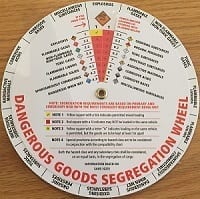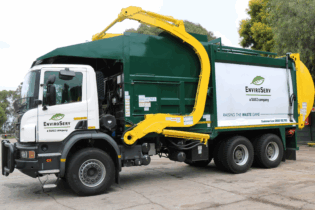In the wake of the disaster at the northern Chinese port of Tianjin, Deidré Penfold, executive director of the Chemical and Allied Industries Association (CAIA), reiterates that proper chemical storage is required to minimise the hazards associated with leaks, spills and accidental mixing of incompatible chemicals.
“According to news reports, the explosions in China took place at a warehouse, which contained hazardous and flammable chemicals, including calcium carbide, sodium cyanide, potassium nitrate, ammonium nitrate and sodium nitrate. Calcium carbide reacts with water to create highly explosive acetylene, which may have triggered off the blasts,” she explains. “Indications are that the firefighters were on site before the explosions. The volatility of the chemicals means the fire was especially unpredictable and dangerous to approach. “CAIA has produced a Dangerous Goods Segregation Wheel that indicates the load and/or storage compatibility of mixed cargoes at a glance, using the class warning diamonds in an easy to use wheel. It assists in the segregation and storage of chemicals according to their hazard class. This prevents an undesirable chemical reaction from occurring should two or more chemicals accidently mix. It also includes useful footnotes.”
Safe packing, transportation essential
Explosives, Class 1 dangerous goods, sodium cyanide Class 6.1, sodium nitrate and potassium nitrate both of Class 5.1 all have compatibility restrictions. Explosives cannot be stored or transported with any other chemicals and Class 5.1 and 6.1 chemicals should not be stored in close proximity to each other nor transported on the same vehicle.








